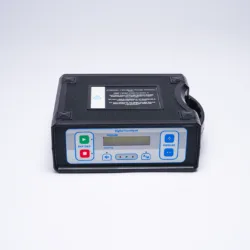Digital Tourniquet System DIT-120
- Fully Automatic single cuff system
- Tourniquet is battery operated up to 4 hr continuous
- Online cuff pressure setting can be changeable in working mode
- with auto deflect function.
SKU: DIT120
Category: Digital Tourniquet System
Tags: #Accu Release Blue digital tourniquet machine, 3200 Tourniquet Systems, A.T.S.® 5000 #A.T.S, accoulock tourniquet machine, Advance Tourniquet Machine, Advance Tourniquet System, Diamond Automatic Electronic Tourniquet Dual Cuff TRDG 503, DIAMOND ELECTRONIC TOURNIQUET AUTOMATIC FOR SINGLE CUFF OPERATION TRDG501, Diamond Tourniquet Machine, Diamond TRDG 501 Automatic Electronic Tourniquet Single Cuff, Digital Tourniquet Machine, Digital tourniquet no-1 brand, Doctroid tourniquet Machine, Dual Port Tourniquet Machine, Electronic Tourniquet Machine, Hospital Pneumatic Tourniquet Machine, HRIM-ECV Electronic Pneumatic Tourniquet Machine, India's no-1 tourniquet machine, Jmd Tech Dual Cuff Tourniquet, MED tourniquet machine, MEKTRONIC Electronic Tourniquet machine, Operation Theater Instrument - tourniquet machine, Orthopaedic Tourniquet, PMV-Dual Digital Pneumatic Tourniquet Machine, Pneumatic tourniquet machine, Portable Tourniquet Machine, Saraswati tourniquet machine, SCT5 Tourniquet Machine, Single Port Tourniquet Machine, SmartPump Tourniquet System, Tourniquet Machine in Mumbai, Tourniquet machine manufacturer surat, Tourniquet Machine Touch Digital, Tourniquet Manufacturer in Gujarat, Tourniquet manufacturer in india, Tourniquet System, Tourniquet Touch
A Digital Tourniquet Machine is a specialized medical device designed to control or restrict blood flow in a targeted area of a patient’s body during surgical procedures or medical interventions. By using a digital interface, these machines enable healthcare professionals to set and monitor precise pressure levels, ensuring that blood flow is temporarily occluded in a safe and controlled manner.
Key Features:
- Digital Control:
Allows for accurate pressure setting and monitoring via a digital display, ensuring consistent and reliable performance. - Enhanced Safety:
Built-in safety mechanisms prevent over-inflation, reducing the risk of injury to the patient. - Versatile Cuff Options:
Available in configurations that support either a single cuff for specific applications or multiple cuffs to control blood flow in different areas simultaneously. - Continuous Pressure Monitoring:
Equipped with sensors that continuously track the applied pressure and adjust it as necessary throughout the procedure. - Preset Programs:
Some models offer preset pressure programs tailored for common surgical procedures, streamlining setup and operation for healthcare providers.
Digital tourniquet machines are widely used in various medical settings—including surgery, orthopedics, plastic surgery, and emergency medicine—where precise, temporary blood flow restriction is critical for performing procedures safely and effectively.
Technical
Cuff Pressure
50 – 400 mm of Hg
Inflation
Motorized Pump
Pressure Resolution
+/- 3 mm of Hg
Accuracy
+/- 5 mm of Hg (Ref. Set Pressure)
Display
Backlight LCD Type Display
Cuff
Single Cuff
Display Time
MMM : SS
Power Input
~230 Volts 50/60 Hz
Battery
Yes
Cuff Types
Silicon Autoclavable Cuff
Cuff Size
12×86 cm / 12×48 cm / 12×48 cm/ 12×28 cm / 6.5×21 cm
Weight
1.5 kg Approx.
Dimensions
225 W x 200 L x 85 H mm
In The Box
- Main Unit 1 Pc
- 5 silicon Different size cuff set.
- 2.5 Mtr Extantion Tubing.
- Power Cable 1 Pc
- Installation report Copy
Download
Cataloge DownloadBe the first to review “Digital Tourniquet System DIT-120” Cancel reply
Related products
Digital Tourniquet System
Digital Tourniquet System


















Reviews
There are no reviews yet.